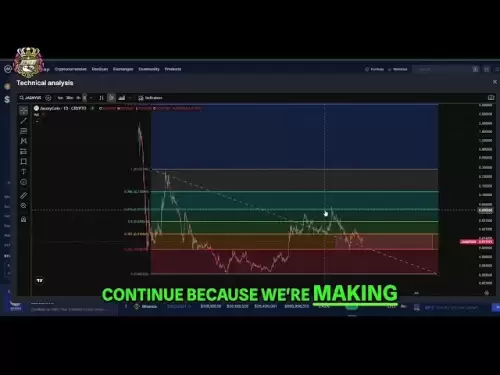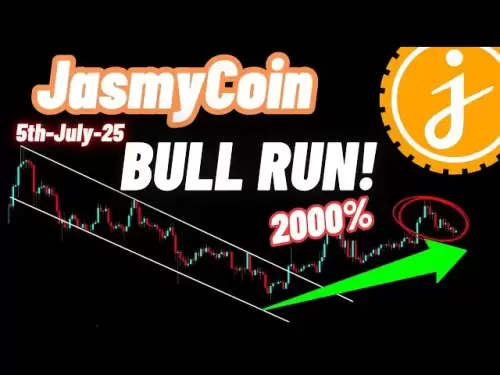-
 Bitcoin
Bitcoin $108,250.0992
0.11% -
 Ethereum
Ethereum $2,515.9404
0.03% -
 Tether USDt
Tether USDt $1.0003
0.00% -
 XRP
XRP $2.2166
-0.19% -
 BNB
BNB $656.5904
0.29% -
 Solana
Solana $147.4122
-0.58% -
 USDC
USDC $1.0000
-0.01% -
 TRON
TRON $0.2830
0.06% -
 Dogecoin
Dogecoin $0.1641
0.27% -
 Cardano
Cardano $0.5739
-0.19% -
 Hyperliquid
Hyperliquid $39.1463
-0.11% -
 Sui
Sui $2.8882
-0.02% -
 Bitcoin Cash
Bitcoin Cash $487.6428
0.31% -
 Chainlink
Chainlink $13.2097
0.07% -
 UNUS SED LEO
UNUS SED LEO $9.0308
0.10% -
 Avalanche
Avalanche $17.8608
0.13% -
 Stellar
Stellar $0.2379
-0.06% -
 Toncoin
Toncoin $2.7400
-0.39% -
 Shiba Inu
Shiba Inu $0.0...01144
-0.36% -
 Litecoin
Litecoin $87.5467
0.66% -
 Hedera
Hedera $0.1538
0.22% -
 Monero
Monero $315.5479
0.36% -
 Dai
Dai $1.0000
0.00% -
 Polkadot
Polkadot $3.3523
-0.71% -
 Ethena USDe
Ethena USDe $1.0003
0.01% -
 Bitget Token
Bitget Token $4.3960
-1.03% -
 Uniswap
Uniswap $7.2663
4.19% -
 Aave
Aave $272.8619
2.04% -
 Pepe
Pepe $0.0...09676
-0.18% -
 Pi
Pi $0.4586
-2.87%
What are the restrictions on OKX's API trading?
OKX's API trading has restrictions like rate limits, API key permissions, trading volume limits, security measures, and regulatory compliance to ensure fair and secure usage.
Apr 13, 2025 at 11:29 pm
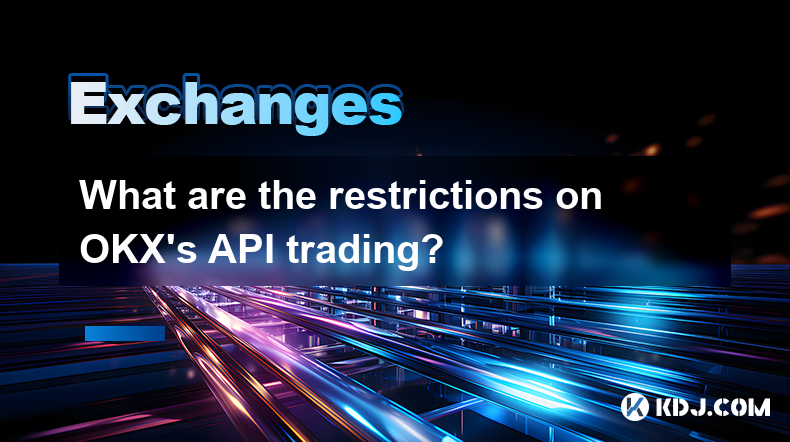
OKX, one of the leading cryptocurrency exchanges, offers an extensive API for trading that allows users to automate their trading strategies, manage their portfolios, and interact with the exchange programmatically. However, there are specific restrictions and limitations on OKX's API trading that users must be aware of to ensure compliance and efficient use. This article will delve into the various restrictions on OKX's API trading, helping users understand and navigate these limitations effectively.
Rate Limits
One of the primary restrictions on OKX's API trading is the rate limit, which is designed to prevent abuse and ensure fair usage of the API. Rate limits are imposed on the number of requests that can be made within a specific timeframe. For OKX, the rate limits vary depending on the type of API endpoint being used.
- Public Endpoints: These endpoints, which include market data and other non-account-specific information, typically have higher rate limits. For example, OKX might allow up to 20 requests per second for public endpoints.
- Private Endpoints: These endpoints, which involve account-specific actions such as placing orders or withdrawing funds, have stricter rate limits. OKX might limit private endpoints to 10 requests per second.
It's crucial for users to monitor their API usage and adhere to these rate limits to avoid having their requests blocked or their API keys temporarily suspended.
API Key Permissions
Another significant restriction on OKX's API trading involves the permissions associated with API keys. When creating an API key on OKX, users can specify the level of access the key has to their account. API key permissions can be categorized into different levels, such as read-only, trading, and withdrawal permissions.
- Read-Only Permissions: These allow the API key to access account information and market data but do not permit any actions that affect the account balance or holdings.
- Trading Permissions: These grant the ability to place orders, cancel orders, and manage trading positions but do not allow for withdrawals.
- Withdrawal Permissions: These are the most sensitive permissions, allowing the API key to initiate withdrawals from the account.
Users must carefully manage their API key permissions to ensure that only necessary actions can be performed through the API, reducing the risk of unauthorized access or misuse.
Trading Volume Limits
OKX also imposes trading volume limits on API trading to manage market stability and prevent manipulative trading practices. These limits can vary based on the user's account type and trading history.
- Daily Trading Volume Limit: This restricts the total amount of cryptocurrency that can be traded through the API within a 24-hour period. For example, a user might be limited to trading up to 100 BTC per day.
- Order Size Limit: This restricts the size of individual orders that can be placed through the API. For instance, a user might be limited to placing orders of no more than 10 BTC at a time.
Understanding and respecting these trading volume limits is essential for users to avoid disruptions in their trading activities and potential account restrictions.
Security Measures
OKX implements various security measures to protect users' accounts and prevent unauthorized API usage. These measures add an additional layer of restrictions on API trading.
- IP Whitelisting: Users can restrict API access to specific IP addresses, ensuring that only trusted devices can interact with their account through the API.
- Two-Factor Authentication (2FA): OKX requires 2FA for certain API actions, particularly those involving sensitive operations like withdrawals. This adds an extra step of verification, enhancing account security.
- API Key Expiration: Users can set expiration dates for their API keys, limiting the duration of access and reducing the risk of long-term unauthorized usage.
By implementing these security measures, OKX aims to protect its users while maintaining the integrity of the trading environment.
Regulatory Compliance
OKX operates in a highly regulated environment, and as such, it must adhere to various regulatory compliance requirements. These requirements can impose additional restrictions on API trading.
- KYC/AML Compliance: OKX must comply with Know Your Customer (KYC) and Anti-Money Laundering (AML) regulations, which can affect API trading. For example, users may need to complete KYC verification before they can use certain API functionalities.
- Geographical Restrictions: Depending on the user's location, certain API features might be restricted due to local regulations. For instance, users from certain countries might not be able to use the withdrawal feature through the API.
Users must be aware of these regulatory restrictions and ensure they comply with all applicable laws and regulations when using OKX's API for trading.
API Usage Guidelines
OKX provides API usage guidelines to help users understand and adhere to the restrictions on API trading. These guidelines cover best practices, common pitfalls, and detailed information on how to use the API effectively.
- Documentation: OKX offers comprehensive documentation that outlines the available endpoints, parameters, and responses. Users should thoroughly review this documentation to understand the capabilities and limitations of the API.
- Testing Environment: OKX provides a testing environment (sandbox) where users can experiment with the API without affecting their live account. This is crucial for testing trading strategies and ensuring compliance with rate limits and other restrictions.
- Error Handling: The API usage guidelines emphasize the importance of proper error handling. Users should implement robust error handling mechanisms to manage API responses and mitigate the impact of any restrictions or limitations.
By following these guidelines, users can maximize the benefits of OKX's API while minimizing the risk of encountering restrictions or issues.
Frequently Asked Questions
Q: Can I increase my API rate limits on OKX?
A: OKX does not typically allow users to increase their API rate limits. However, users can contact OKX support to discuss their specific needs and potentially receive guidance on optimizing their API usage within the existing limits.
Q: How can I monitor my API usage on OKX?
A: OKX provides tools and dashboards within the user account that allow you to monitor your API usage in real-time. These tools display your current usage against the rate limits and can help you avoid hitting these limits.
Q: What happens if I exceed my trading volume limits on OKX?
A: If you exceed your trading volume limits on OKX, your API requests may be rejected, and you might receive error messages indicating that you have reached your limit. In some cases, repeated violations could lead to temporary or permanent account restrictions.
Q: Are there any fees associated with using OKX's API?
A: OKX does not charge additional fees specifically for using the API. However, standard trading fees apply to any trades executed through the API. Users should review OKX's fee structure to understand the costs associated with their trading activities.
Disclaimer:info@kdj.com
The information provided is not trading advice. kdj.com does not assume any responsibility for any investments made based on the information provided in this article. Cryptocurrencies are highly volatile and it is highly recommended that you invest with caution after thorough research!
If you believe that the content used on this website infringes your copyright, please contact us immediately (info@kdj.com) and we will delete it promptly.
- XRP's Upside Potential: Analysts Bullish Despite Accessibility Concerns
- 2025-07-06 10:30:13
- Dubai Hotelier, Crypto Scam, and an Arrest in India: A Tangled Web
- 2025-07-06 10:30:13
- Bitcoin's Calm Before the Storm: ETF Inflows Surge Amidst Low Volatility
- 2025-07-06 10:50:13
- Crypto Capital Inflows: Why Qubetics, Ethereum, and SUI are Investment Coins to Watch
- 2025-07-06 10:50:13
- Bitcoin, Crypto, and Polymarket: Decoding the Crystal Ball
- 2025-07-06 11:15:22
- XRP Price Prediction: Can XRP Break the Weekly Downtrend?
- 2025-07-06 11:00:13
Related knowledge
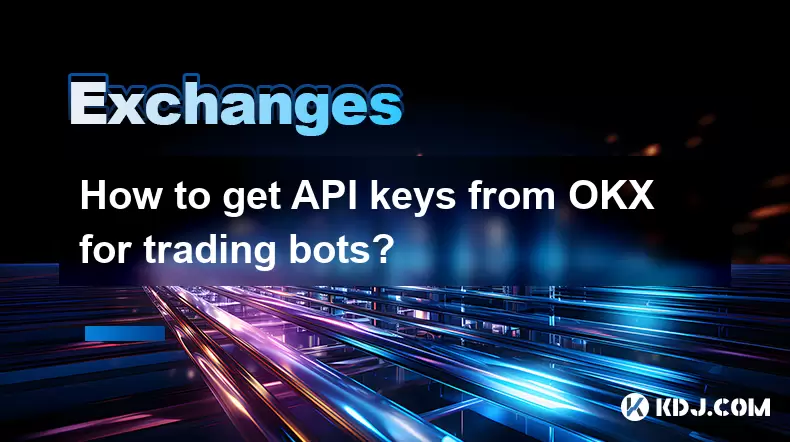
How to get API keys from OKX for trading bots?
Jul 03,2025 at 07:07am
Understanding API Keys on OKXTo interact with the OKX exchange programmatically, especially for building or running trading bots, you need to obtain an API key. An API (Application Programming Interface) key acts as a secure token that allows your bot to communicate with the exchange's servers. On OKX, these keys come with customizable permissions such ...
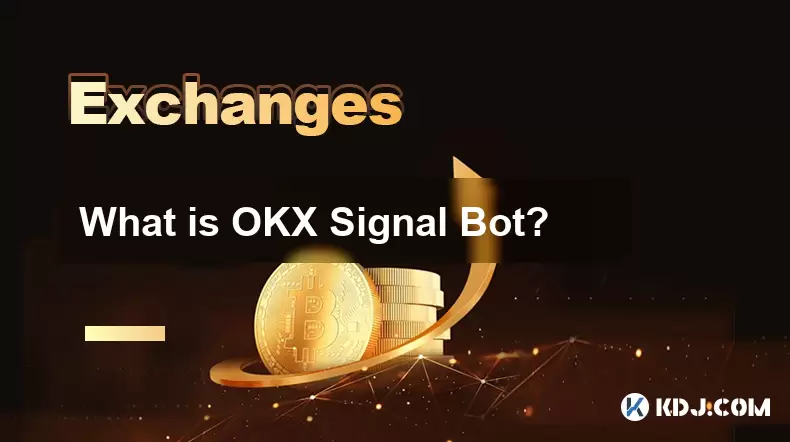
What is OKX Signal Bot?
Jul 02,2025 at 11:01pm
Understanding the Basics of OKX Signal BotThe OKX Signal Bot is a feature within the OKX ecosystem that provides users with automated trading signals and execution capabilities. Designed for both novice and experienced traders, this bot helps identify potential trading opportunities by analyzing market trends, technical indicators, and historical data. ...
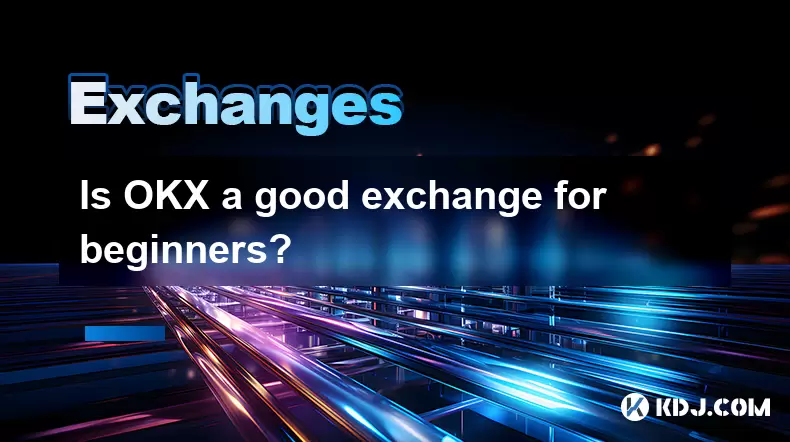
Is OKX a good exchange for beginners?
Jul 03,2025 at 05:00pm
What Is OKX and Why Is It Popular?OKX is one of the leading cryptocurrency exchanges globally, known for its robust trading infrastructure and a wide variety of digital assets available for trading. It supports over 300 cryptocurrencies, including major ones like Bitcoin (BTC), Ethereum (ETH), and Solana (SOL). The platform has gained popularity not onl...
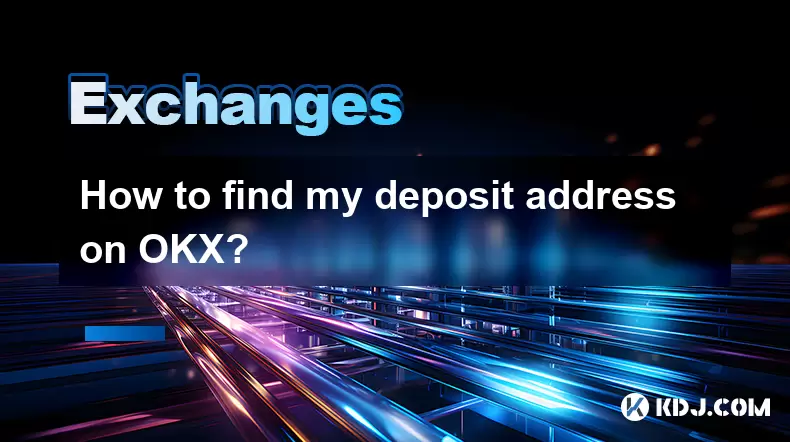
How to find my deposit address on OKX?
Jul 06,2025 at 02:28am
What is a Deposit Address on OKX?A deposit address on OKX is a unique alphanumeric identifier that allows users to receive cryptocurrencies into their OKX wallet. Each cryptocurrency has its own distinct deposit address, and using the correct one is crucial to ensure funds are received properly. If you're looking to transfer digital assets from another ...
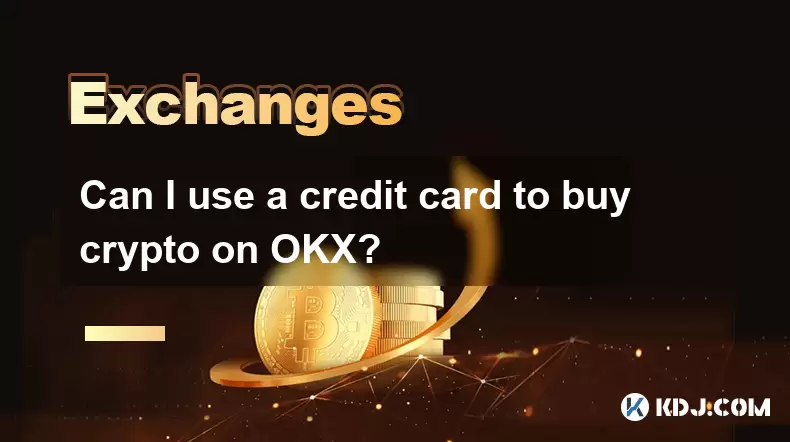
Can I use a credit card to buy crypto on OKX?
Jul 04,2025 at 04:28am
Understanding OKX and Credit Card PaymentsOKX is one of the leading cryptocurrency exchanges globally, offering a wide range of services including spot trading, derivatives, staking, and more. Users often wonder whether they can use a credit card to buy crypto on OKX, especially if they are new to the platform or looking for quick ways to enter the mark...
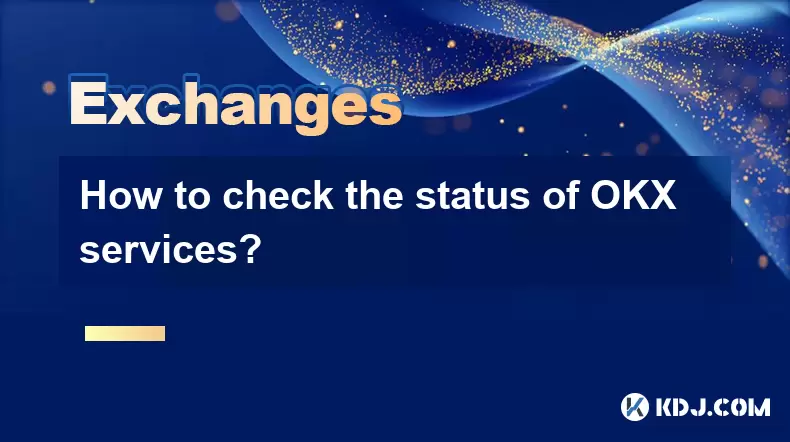
How to check the status of OKX services?
Jul 02,2025 at 11:14pm
What is OKX, and Why Checking Service Status Matters?OKX is one of the world’s leading cryptocurrency exchanges, offering services such as spot trading, futures trading, staking, and more. With millions of users relying on its platform for daily transactions, it's crucial to know how to check the status of OKX services. Downtime or maintenance can affec...

How to get API keys from OKX for trading bots?
Jul 03,2025 at 07:07am
Understanding API Keys on OKXTo interact with the OKX exchange programmatically, especially for building or running trading bots, you need to obtain an API key. An API (Application Programming Interface) key acts as a secure token that allows your bot to communicate with the exchange's servers. On OKX, these keys come with customizable permissions such ...

What is OKX Signal Bot?
Jul 02,2025 at 11:01pm
Understanding the Basics of OKX Signal BotThe OKX Signal Bot is a feature within the OKX ecosystem that provides users with automated trading signals and execution capabilities. Designed for both novice and experienced traders, this bot helps identify potential trading opportunities by analyzing market trends, technical indicators, and historical data. ...

Is OKX a good exchange for beginners?
Jul 03,2025 at 05:00pm
What Is OKX and Why Is It Popular?OKX is one of the leading cryptocurrency exchanges globally, known for its robust trading infrastructure and a wide variety of digital assets available for trading. It supports over 300 cryptocurrencies, including major ones like Bitcoin (BTC), Ethereum (ETH), and Solana (SOL). The platform has gained popularity not onl...

How to find my deposit address on OKX?
Jul 06,2025 at 02:28am
What is a Deposit Address on OKX?A deposit address on OKX is a unique alphanumeric identifier that allows users to receive cryptocurrencies into their OKX wallet. Each cryptocurrency has its own distinct deposit address, and using the correct one is crucial to ensure funds are received properly. If you're looking to transfer digital assets from another ...

Can I use a credit card to buy crypto on OKX?
Jul 04,2025 at 04:28am
Understanding OKX and Credit Card PaymentsOKX is one of the leading cryptocurrency exchanges globally, offering a wide range of services including spot trading, derivatives, staking, and more. Users often wonder whether they can use a credit card to buy crypto on OKX, especially if they are new to the platform or looking for quick ways to enter the mark...

How to check the status of OKX services?
Jul 02,2025 at 11:14pm
What is OKX, and Why Checking Service Status Matters?OKX is one of the world’s leading cryptocurrency exchanges, offering services such as spot trading, futures trading, staking, and more. With millions of users relying on its platform for daily transactions, it's crucial to know how to check the status of OKX services. Downtime or maintenance can affec...
See all articles





















